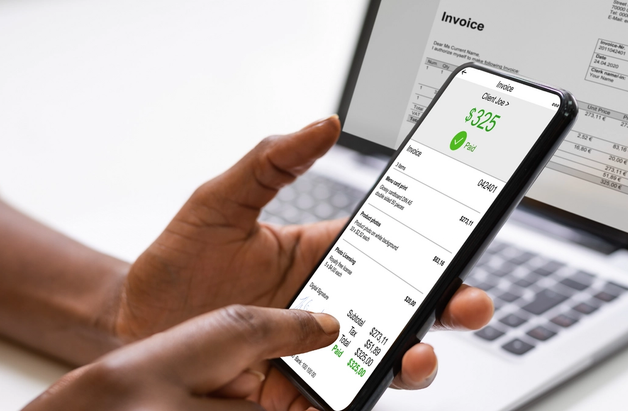Self-Employed Invoice Explained and How to Create It Easily

May 31, 2023
A self-employed invoice is an integral document for all independently working free agents, consultants, and professionals. It provides proof of the work completed and the goods provided to the client.
Generating an invoice for every client can be tedious for professionals who juggle the roles of employer and staff simultaneously. The more projects you get, the heavier the workload you have to complete accounting and sales-wise.
In this article, we’ll learn all about self-employed invoices and show you how to consistently make them hassle-free. Read on!
What is a Self-Employed Invoice?
A self-employed invoice is a document issued by independently working entities and individuals. It providesinformation on the services and work that must be fulfilled for a transaction or project.
It also details the agreed hourly rate between the self-employed individual and their clientele and the preferred payment method and payment terms of the person or entity providing the service.
Invoices for self-employed individuals enable an effective way to track all pending work that needs completion and payments from clients that are yet to be fulfilled.
Why is a Self-Employed Invoice Important?
Earning money through self-employment is a unique business setup because you are your own boss. You take on the roles and responsibilities of both an employer and an employee.
That said, you need an efficient yet simple system that will help you stay on top of every project or transaction you take on. By creating invoices for every job, you exude professionalism and incorporate a sense of legitimacy into your services.
After all, a transaction that lacks documentation or proof of completion can be easily regarded as false or invalid. Self-employed invoices protect your business by recording the hours and services rendered for a particular project.
Once your client receives the invoice, they can review the details, such as the rates and the total amount they need to pay. If they have additional questions, they may consult with you to further discuss the conditions in the invoice, clarify any misunderstandings, and let you make adjustments if necessary.
What Does a Self-Employed Invoice Include?
Generally, a self-employed invoice includes the following information:
#1. Name and Contact Information

The first thing that goes in an invoice are the names of the sender and the recipient. Always confirm that the names are spelled completely and correctly, or else the invoice becomes null and void.
For the contact information, include your own and your client’s phone number, address, and email. Similar to your client’s name, verifying the accuracy of the contact details is paramount, as it helps you reach out to them for any clarifications with your invoice.
#2. Invoice Date and Number

The date on your invoice is the exact date when the document was issued. On the other hand, the invoice number is a chronological codethat’s unique to each invoice.
These are crucial elements of your invoice, as they enable you to keep your invoices organized for accounting and taxation purposes. You can also use the invoice numbers as a reference when following up on payments from your clients.
#3. Breakdown of Services or Goods

List all the services or goods you have provided for a job request or project. Make your list clear, concise, and easy for your client to understand.
Aside from breaking down your services, include the number of hours you have worked to complete the job plus the corresponding rates per hour.
Multiply the number of hours with the hourly rate and indicate the total in the invoice, but label it as ‘current total.’ Once you’ve totaled your combined hours and rates, apply the required tax deductions, and the resulting values will reflect the balance due in your invoice.
The balance due, or grand total, is the amount you charge your clients.
#4. Payment Methods

Payment methods can range from cash payments to credit cards, checks, mobile transactions, and bank transfers. It is ideal to give your clients at least two payment method options for flexibility and convenience.
Specifying your preferred payment methods guarantees that you receive the payment securely and within the timeframe when you expect compensation for your services.
If possible, you can discuss your payment methods with your client in advance so you can determine whether a third payment option is needed or not. Aside from agreeing on a payment method, consider establishing penalties and escalation strategies in case of late or overdue payments.
#5. Additional Notes

The additional notes section of your invoice is reserved for any supplemental information in the transaction that is not covered in any other parts of the invoice. For example, if you are selling fragile or perishable goods, you can provide special instructions on how to handle and care for the items.
At the same time, if you have made adjustments to your rates, amended errors in your previous invoice, or settled discrepancies in your client’s payment, then the additional notes section is the best place to address them.
How to Make a Professional Self-Employed Invoice

The best way to make a professional self-employed invoice is to use an invoice generator. It’s super easy to use, doesn’t require much time, and all you have to do is:
- Open the invoice generator.
- Fill in the blank fields with the required information.
- Preview your invoice and download it.
Once you’re done, you’ll receive your desired document via email, which you can then print or forward to your clients in a few clicks.
Benefits of Using an Invoice Generator
Being self-employed means you have a lot more on your plate because you shoulder all the responsibilities tied to running and sustaining your business.
Regardless of whether you are providing services in the form of freelancing, the fact is that you are acting as your accountant, sales, and marketing team (when you advertise your expertise), and your customer support department (when addressing concerns and queries from clients).
You need to be smart with how you use your time and maximize your resources, and an invoice generator allows you to kill two birds with one stone. Since all the important fields are laid out for you in the self employed invoice generator template, it effectively cuts off the time it takes to create an invoice from scratch.
With it, you can create as many invoices as you need, depending on the number of projects you are working on or the job requests sent by each of your clients.
There is also no need to spend an excessive amount of money since invoice generators are priced at budget-friendly rates. That means you can maximize its advantages without draining your wallet.
Other Important Invoices for Professionals
Here are other types of invoices that you might need as your self-employment venture continues to flourish:
Invoice Type | Definition |
|---|---|
It is a compilation of multiple invoices issued to a single client. This invoice is used when a client requests or purchases more than one service or item. | |
Also called a credit memo, a credit invoice enumerates the amount owed by a client to a service provider. | |
An electronic form of invoice that is sent to clients typically through email. | |
It may be used by either independent contractors or self-employed individuals. | |
A recurring invoice is issued consistently at scheduled intervals for services given to clients under an ongoing agreement or contract. | |
This type of invoice is also called a “consultant invoice” and is used by consultants to cover advanced payment for all the services and expected results by the client. | |
The standard and universally recognized type of invoice used to request payment from clients in exchange for the products and services they purchased. |
Final Thoughts
Self-employed invoices represent different types of businesses and expertise. You can be a photographer, consultant, seller, or even own a small marketing agency.
Whether you are pursuing self-employment as a part-time gig or a more permanent and long-term work arrangement, issuing invoices for all the work you put out highlights your professionalism and trustworthiness as a business.
More importantly, your self-employed invoice serves as insurance and protection for your services. You can use it as solid proof of your work in case you encounter a client who refuses to pay for the items and services you have provided them.
Key Takeaways
- A self-employed invoice is a document issued to inform clients of the items and services provided to them, the corresponding rates, and the total amount to be paid.
- The use of a self-employed invoice establishes the legitimacy of a self-employed individual and provides proof of work and protection for the seller.
- Typically, a self-employed invoice contains the company and client information, a breakdown of services and items provided, payment terms, etc.
- Invoice generators provide a cost-effective self-employment solution by significantly reducing the time and effort it takes to create invoices for each project.


